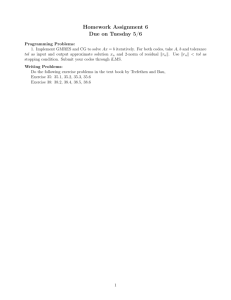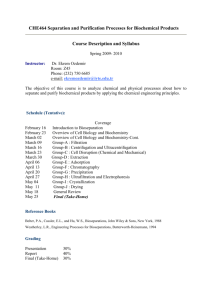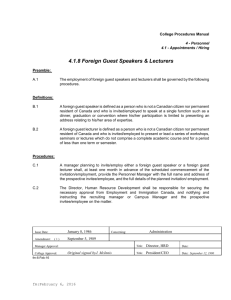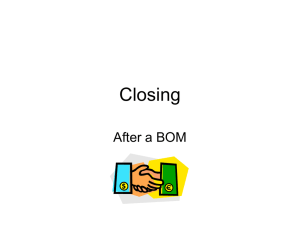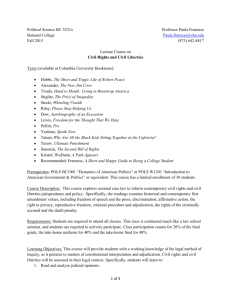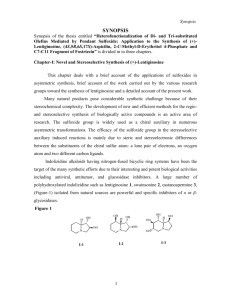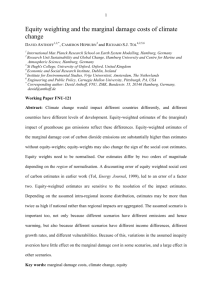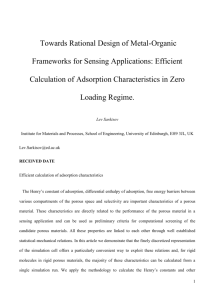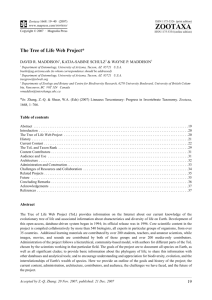Read and syllabus here.
advertisement
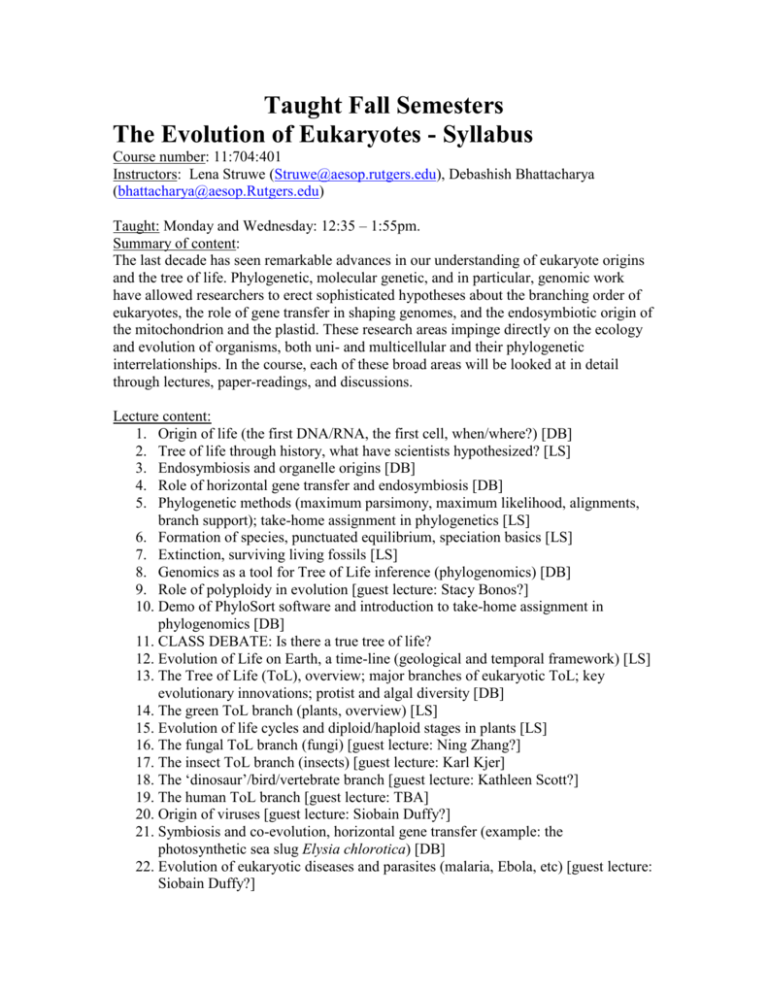
Taught Fall Semesters The Evolution of Eukaryotes - Syllabus Course number: 11:704:401 Instructors: Lena Struwe (Struwe@aesop.rutgers.edu), Debashish Bhattacharya (bhattacharya@aesop.Rutgers.edu) Taught: Monday and Wednesday: 12:35 – 1:55pm. Summary of content: The last decade has seen remarkable advances in our understanding of eukaryote origins and the tree of life. Phylogenetic, molecular genetic, and in particular, genomic work have allowed researchers to erect sophisticated hypotheses about the branching order of eukaryotes, the role of gene transfer in shaping genomes, and the endosymbiotic origin of the mitochondrion and the plastid. These research areas impinge directly on the ecology and evolution of organisms, both uni- and multicellular and their phylogenetic interrelationships. In the course, each of these broad areas will be looked at in detail through lectures, paper-readings, and discussions. Lecture content: 1. Origin of life (the first DNA/RNA, the first cell, when/where?) [DB] 2. Tree of life through history, what have scientists hypothesized? [LS] 3. Endosymbiosis and organelle origins [DB] 4. Role of horizontal gene transfer and endosymbiosis [DB] 5. Phylogenetic methods (maximum parsimony, maximum likelihood, alignments, branch support); take-home assignment in phylogenetics [LS] 6. Formation of species, punctuated equilibrium, speciation basics [LS] 7. Extinction, surviving living fossils [LS] 8. Genomics as a tool for Tree of Life inference (phylogenomics) [DB] 9. Role of polyploidy in evolution [guest lecture: Stacy Bonos?] 10. Demo of PhyloSort software and introduction to take-home assignment in phylogenomics [DB] 11. CLASS DEBATE: Is there a true tree of life? 12. Evolution of Life on Earth, a time-line (geological and temporal framework) [LS] 13. The Tree of Life (ToL), overview; major branches of eukaryotic ToL; key evolutionary innovations; protist and algal diversity [DB] 14. The green ToL branch (plants, overview) [LS] 15. Evolution of life cycles and diploid/haploid stages in plants [LS] 16. The fungal ToL branch (fungi) [guest lecture: Ning Zhang?] 17. The insect ToL branch (insects) [guest lecture: Karl Kjer] 18. The ‘dinosaur’/bird/vertebrate branch [guest lecture: Kathleen Scott?] 19. The human ToL branch [guest lecture: TBA] 20. Origin of viruses [guest lecture: Siobain Duffy?] 21. Symbiosis and co-evolution, horizontal gene transfer (example: the photosynthetic sea slug Elysia chlorotica) [DB] 22. Evolution of eukaryotic diseases and parasites (malaria, Ebola, etc) [guest lecture: Siobain Duffy?] 23. CLASS DEBATE: Will climate change destroy the planet? 24. TBA Student audience Both advanced undergraduate and graduate students at SEBS or SAS will benefit from training in approaches to understanding eukaryote phylogeny from their birth to the interrelationships of extant clades. Credits: 3 (2 lectures/week) Prerequisites: Two semesters of general biology (01:119:101/102) or equivalent, AND Fundamentals of Evolution 11:704:251 or equivalent. Contact instructors for special permission if you do not have these prerequisites. Course website and online content: A course website will be developed using the ecollege course shell and include readings, gradebook, links to online resources such as websites, articles, interactive materials, and videos, and also contain online selfassessment quizzes and forums for discussions of particular topics. Course assessment: 2 exams, 2 take-home assignments (one each on phylogenetics & phylogenomics), and 1 larger essay on the evolution of a selected taxonomic group or evolutionary phenomena. Evaluation and Grading: Take-home assignment 1: 10% Take-home assignment 2: 10% Midterm: 30% Final exam: 30% Essay: 20% Hands-on, practical content: Take-home assignment of a phylogenetic analysis using datasets of DNA sequences from about 20 species using freely available software programs. Covers DNA alignment, sequence analysis, and phylogenetic analysis. Take-home assignment of a phylogenomic analysis using datasets and freely available software programs. Lectures will incorporate hands-on examples of organismal groups whenever possible. Readings: A variety of selected textbook chapters, scientific articles, and writings from popular press.
